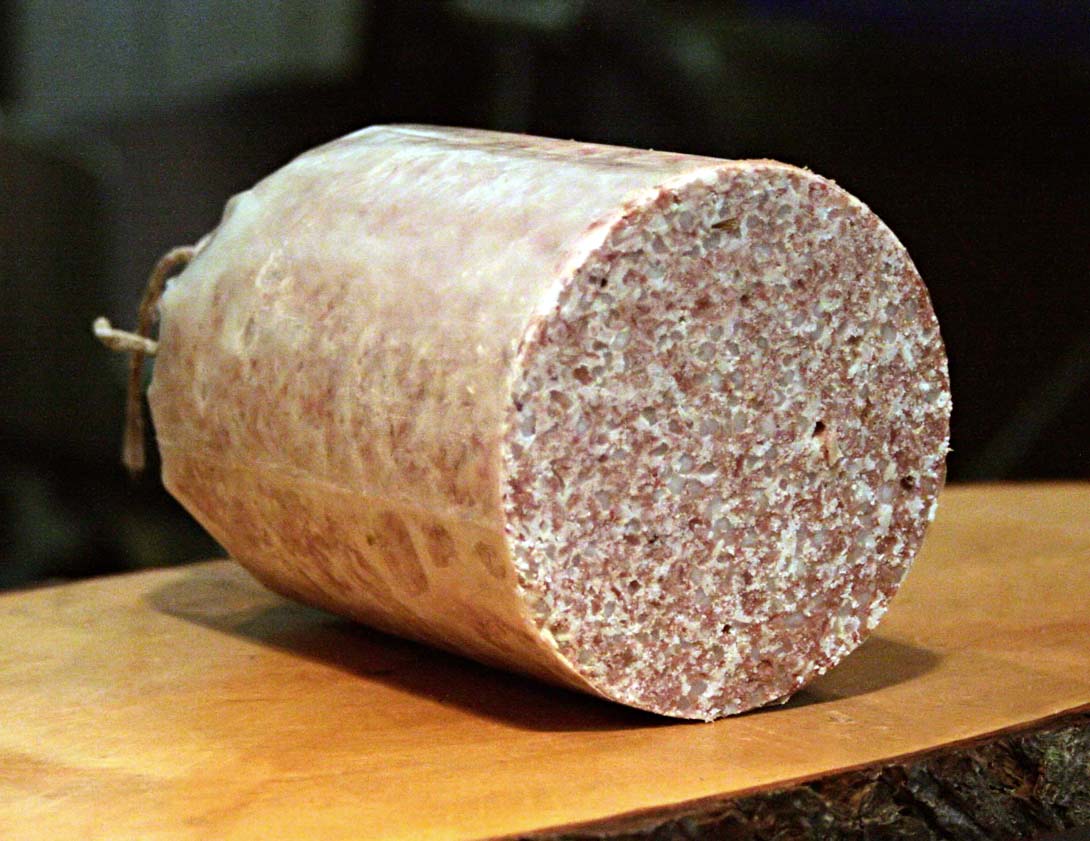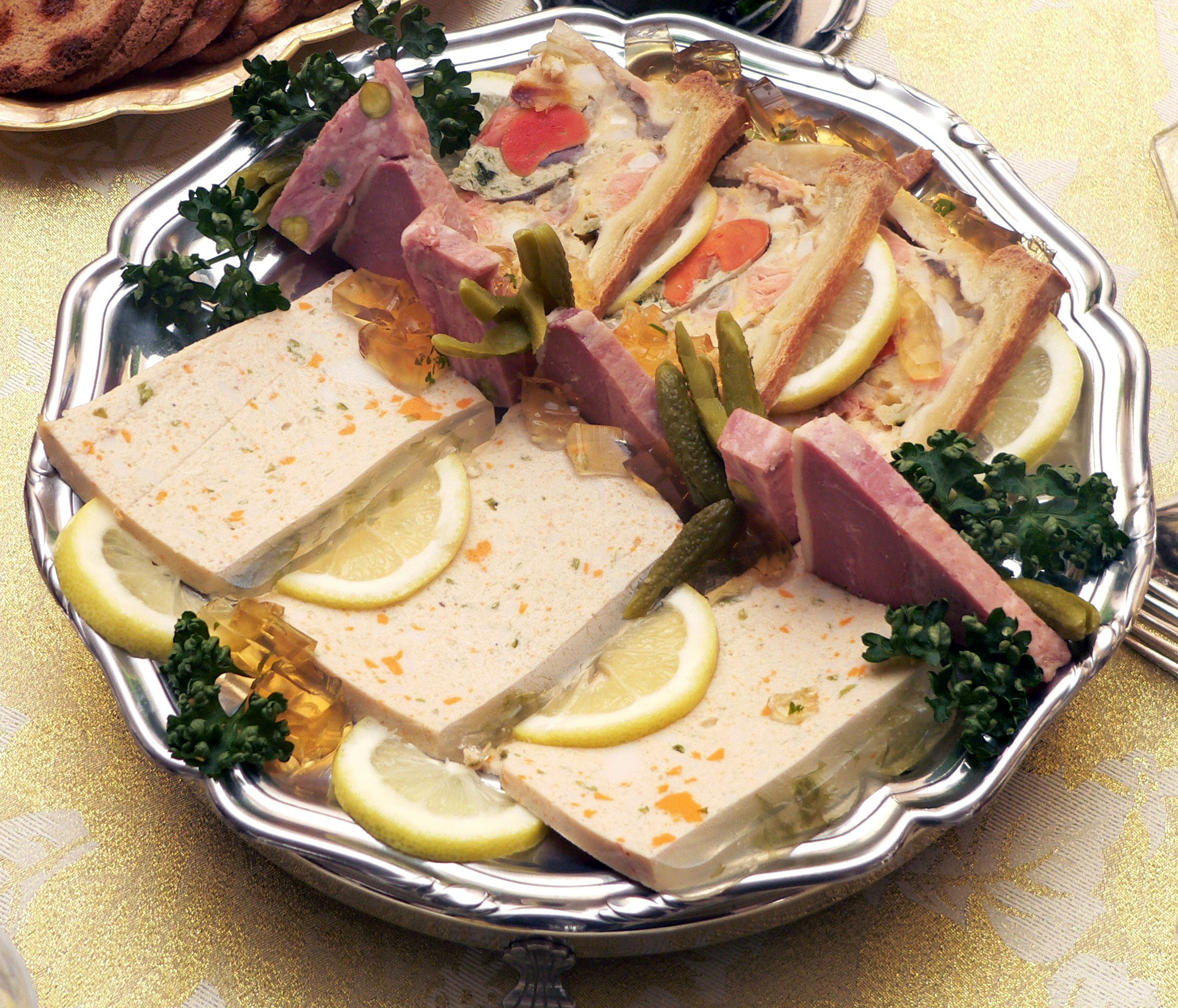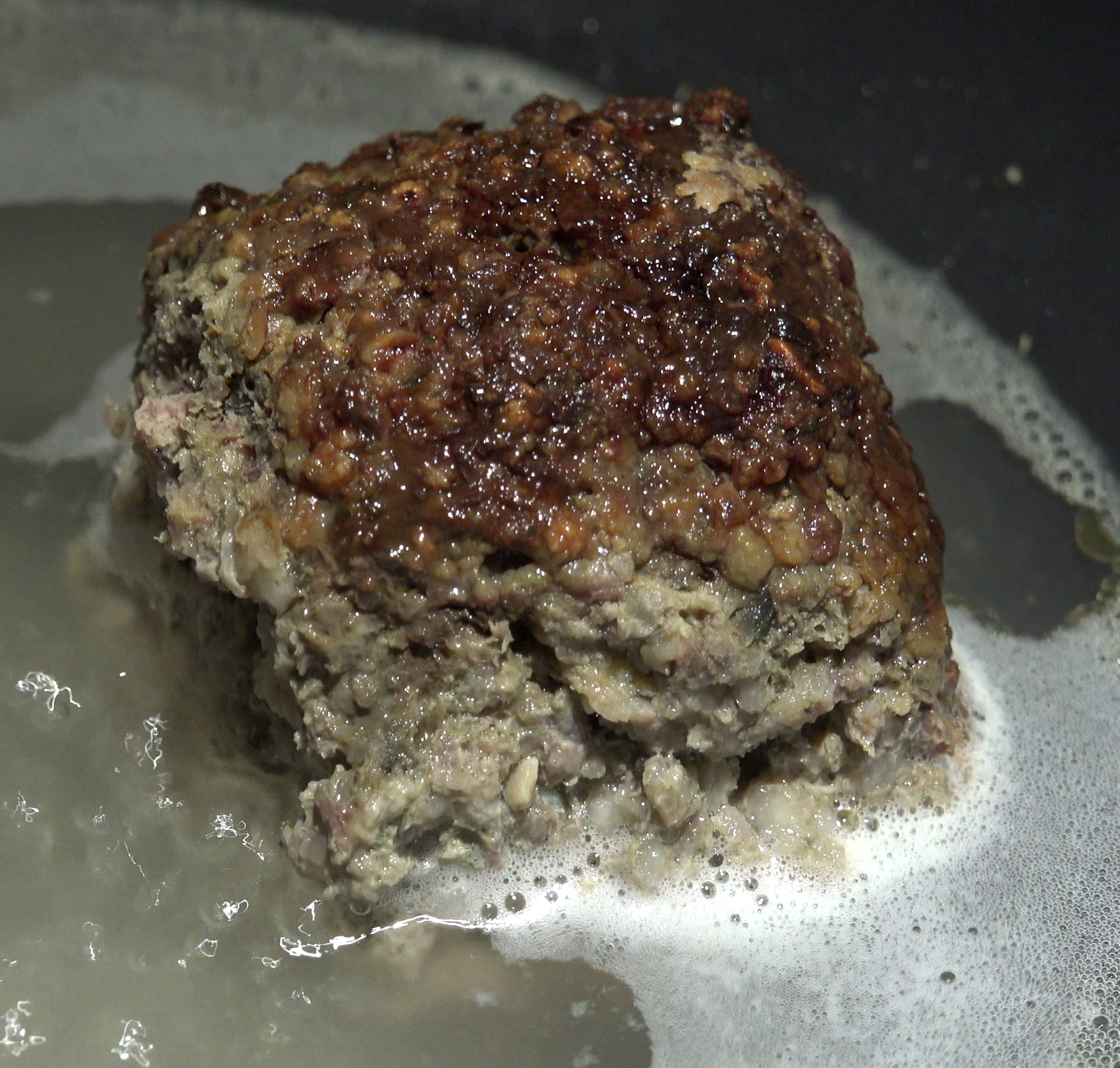|
Pölsa
Pölsa is a traditional northern Swedish dish that is a close relative to Scottish haggis. The main ingredients are beef sinew, liver, heart, lung, onion, and barley, mixed with stock, black pepper, and marjoram. Sometimes ground beef or minced pork is added. It is usually served with mashed or boiled potatoes and pickled beetroot, and sometimes a fried egg. Background The Norwegian and Danish word '' pølse'' means sausage and even if the two dishes don't look the same, the two words are related. Pölsa is simply a traditional variety of sausage filling without any casing. In popular culture The dish plays a central role in the allegorical novel ''Pölsan'' (2002) by Swedish author Torgny Lindgren (1938–2017), in which two men go on a personal quest across postwar Sweden in search of the genuine Swedish "pölsa". See also * Haggis – similar food from Scotland * Labskaus – similar food from Northern Germany * Lobscouse – similar food from Norway * Scouse (food) ... [...More Info...] [...Related Items...] OR: [Wikipedia] [Google] [Baidu] |
Stippgrütze
''Stippgrütze'', also called ''Wurstebrei'', is a German dish from Westphalia which is similar to ''Grützwurst'' or '' Knipp''. It consists of barley groats cooked in sausage juices (''Wurstbrühe''), which are enriched with pieces of meat, offal, such as heart, kidney or liver and seasoned with spices and salt. More rarely, finely chopped onions are added. The cooked ingredients are minced after the juices have been poured off and a crumbly cake is left which is held together with fat and which sets on cooling. There are various recipes, but they all contain barley groats, fat and meat. A classic recipe contains pig offal or heart, belly pork with rind, lard greaves, barley groats, water, salt, pepper, allspice and thyme. The nutrition varies; one portion made from about 300 g of pork and 60 g of groats contains about 850 kJ.Dr. Oetker, ''Kochen von A-Z'', p. 502, Dr. Oetker Verlag KG, Bielefeld 2004 Its relatively high fat content means that ''Stippgrütze'' keeps well and ... [...More Info...] [...Related Items...] OR: [Wikipedia] [Google] [Baidu] |
Swedish Cuisine
Swedish cuisine () is the traditional food of Sweden. Due to Sweden's large north-to-south expanse, there are regional differences between the cuisine of Norrland, North and South Sweden. Historically, in the far north, meats such as reindeer, and other Game (hunting), game dishes were eaten, some of which have their roots in the Sámi people#Sámi culture, Sami culture, while fresh vegetables have played a larger role in the South. Many traditional dishes employ simple, contrasting flavours, such as the traditional dish of meatballs and brown cream sauce with tart, pungent lingonberry jam. General features Swedish cuisine could be described as centered around cultured dairy products, crisp and soft breads, berries and stone fruits, beef, Chicken (food), chicken, Lamb and mutton, lamb, pork, eggs, and seafood. Potatoes are often served as a side dish, often boiled. Swedish cuisine has a wide variety of breads of different shapes and sizes, made of rye, wheat, oat, white, dark ... [...More Info...] [...Related Items...] OR: [Wikipedia] [Google] [Baidu] |
Torgny Lindgren
Gustav Torgny Lindgren (16 June 1938 – 16 March 2017) was a Swedish writer. Lindgren was the son of Andreas Lindgren and Helga Björk. He studied in Umeå to become a teacher and worked as a teacher until the middle of the 1970s. For several years he was active as a local politician for the Swedish Social Democratic Party. In the 1980s he converted to the Catholic faith. Lindgren began as a poet in 1965 but had to wait until 1982 for his breakthrough, with the novel ''The Way of a Serpent'' (Swedish: ''Ormens väg på hälleberget''). Lindgren's work was translated into more than thirty languages and was one of Sweden's most internationally successful contemporary writers. He became a member of the Swedish Academy in 1991. ''The Way of a Serpent'' ''The Way of a Serpent'' tells the story of a farmer family in a poverty-stricken region in the northern parts of Sweden in the nineteenth century. The family formerly owned its land but had to sell it cheap during a succession of ... [...More Info...] [...Related Items...] OR: [Wikipedia] [Google] [Baidu] |
Liver
The liver is a major metabolic organ (anatomy), organ exclusively found in vertebrates, which performs many essential biological Function (biology), functions such as detoxification of the organism, and the Protein biosynthesis, synthesis of various proteins and various other Biochemistry, biochemicals necessary for digestion and growth. In humans, it is located in the quadrants and regions of abdomen, right upper quadrant of the abdomen, below the thoracic diaphragm, diaphragm and mostly shielded by the lower right rib cage. Its other metabolic roles include carbohydrate metabolism, the production of a number of hormones, conversion and storage of nutrients such as glucose and glycogen, and the decomposition of red blood cells. Anatomical and medical terminology often use the prefix List of medical roots, suffixes and prefixes#H, ''hepat-'' from ἡπατο-, from the Greek language, Greek word for liver, such as hepatology, and hepatitis The liver is also an accessory digestive ... [...More Info...] [...Related Items...] OR: [Wikipedia] [Google] [Baidu] |
Labskaus
Labskaus () is a culinary speciality from northern Germany and in particular from the cities of Bremen (city), Bremen, Hamburg, and Lübeck. The main ingredients are salted meat or corned beef, potatoes, and onion. Some recipes put beetroot, pickled gherkin, or even herring into it, while others have these ingredients as side dishes. Etymology The origin of this word is uncertain. One possible source for the name could be Latvian language, Latvian ''labs kauss'', meaning 'good bowl' or hotpot, or Lithuanian language , Lithuanian ''labas káušas'', meaning the same. The dish became common among sailors during the time of the great ships. Potatoes and salted meats were standard fare and labskaus would stretch the meat supply. Labskaus is now commonly served in restaurants only on Germany, Germany's northern coast, as well as in traditional Denmark, Danish restaurants. Compare with Scouse (food), scouse. Preparation The meal is traditionally prepared by boiling the beef in broth ... [...More Info...] [...Related Items...] OR: [Wikipedia] [Google] [Baidu] |
Offal
Offal (), also called variety meats, pluck or organ meats, is the internal organ (anatomy), organs of a butchered animal. Offal may also refer to the by-products of Milling (grinding), milled grains, such as corn or wheat. Some cultures strongly consider offal consumption to be taboo, while others use it as part of their everyday food, such as lunch meats, or, in many instances, as Delicacy, delicacies. Certain offal dishes—including ''foie gras'' and ''pâté''—are often regarded as gourmet food in the culinary arts. Others remain part of traditional regional cuisine and are consumed especially during holidays; some examples are sweetbread, Jewish chopped liver, Scottish haggis, U.S. chitterlings, and Mexican Menudo (soup), menudo. On the other hand, intestines are traditionally used as casing for sausages. Depending on the context, ''offal'' may refer only to those parts of an animal carcass discarded after butchering or skinning; offal not used directly for human or anim ... [...More Info...] [...Related Items...] OR: [Wikipedia] [Google] [Baidu] |
The Guardian
''The Guardian'' is a British daily newspaper. It was founded in Manchester in 1821 as ''The Manchester Guardian'' and changed its name in 1959, followed by a move to London. Along with its sister paper, ''The Guardian Weekly'', ''The Guardian'' is part of the Guardian Media Group, owned by the Scott Trust Limited. The trust was created in 1936 to "secure the financial and editorial independence of ''The Guardian'' in perpetuity and to safeguard the journalistic freedom and liberal values of ''The Guardian'' free from commercial or political interference". The trust was converted into a limited company in 2008, with a constitution written so as to maintain for ''The Guardian'' the same protections as were built into the structure of the Scott Trust by its creators. Profits are reinvested in its journalism rather than distributed to owners or shareholders. It is considered a newspaper of record in the UK. The editor-in-chief Katharine Viner succeeded Alan Rusbridger in 2015. S ... [...More Info...] [...Related Items...] OR: [Wikipedia] [Google] [Baidu] |
Faggot (food)
Faggots are meatballs made from minced off-cuts and offal (especially pork, and traditionally pig's heart, liver and fatty belly meat or bacon) mixed with herbs and sometimes bread crumbs. It is a traditional dish in the United Kingdom, especially South and Mid Wales and the English Midlands. Faggots originated as a traditional cheap food consumed by country people in Western England, particularly west Wiltshire and the West Midlands. Their popularity spread from there, especially to South Wales in the mid-nineteenth century, when many agricultural workers left the land to work in the rapidly expanding industry and mines of that area. Faggots are also known as "ducks" in Yorkshire, Lincolnshire and Lancashire, often as "savoury ducks". The first use of the term in print was in the ''Manchester Courier and Lancashire General Advertiser'' of Saturday 3 June 1843, a news report of a gluttonous man who ate twelve of them. Preparation and serving Commonly, a faggot consists ... [...More Info...] [...Related Items...] OR: [Wikipedia] [Google] [Baidu] |
Sinew
A tendon or sinew is a tough band of dense fibrous connective tissue that connects muscle to bone. It sends the mechanical forces of muscle contraction to the skeletal system, while withstanding tension. Tendons, like ligaments, are made of collagen. The difference is that ligaments connect bone to bone, while tendons connect muscle to bone. There are about 4,000 tendons in the adult human body. Structure A tendon is made of dense regular connective tissue, whose main cellular components are special fibroblasts called tendon cells (tenocytes). Tendon cells synthesize the tendon's extracellular matrix, which abounds with densely-packed collagen fibers. The collagen fibers run parallel to each other and are grouped into fascicles. Each fascicle is bound by an endotendineum, which is a delicate loose connective tissue containing thin collagen fibrils and elastic fibers. A set of fascicles is bound by an epitenon, which is a sheath of dense irregular connective tissue. ... [...More Info...] [...Related Items...] OR: [Wikipedia] [Google] [Baidu] |
Scouse (food)
Scouse is a type of stew typically made from chunks of meat (usually beef or lamb) with potatoes, carrots, and onion. It is particularly associated with the port of Liverpool; hence, the inhabitants of that city are often referred to as "Liverpool#Demonym and identity, scousers". The word "scouse" comes from ''lobscouse'', a stew commonly eaten by sailors throughout northern Europe in the past, and surviving in different forms there today. Description Scouse is particularly associated with the port of Liverpool. The recipe for scouse is fairly broad; it was traditionally made from leftovers and whatever was in season. ''The Guardian, Guardian'' food writer Felicity Cloake describes scouse as being similar to Irish stew or Lancashire hotpot, though generally using beef rather than lamb as the meat. While ingredients can vary, those essentials are potatoes, carrots, onions, and chunks of meat, with beef favoured over lamb. These are simmered together for several hours. The meat may ... [...More Info...] [...Related Items...] OR: [Wikipedia] [Google] [Baidu] |






